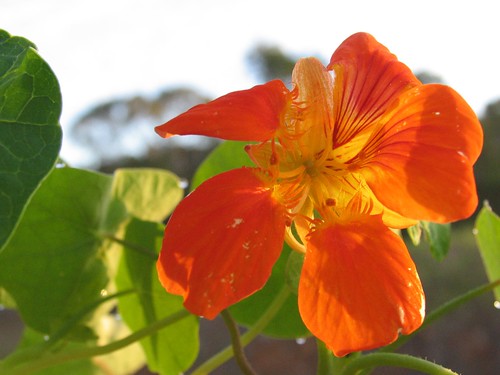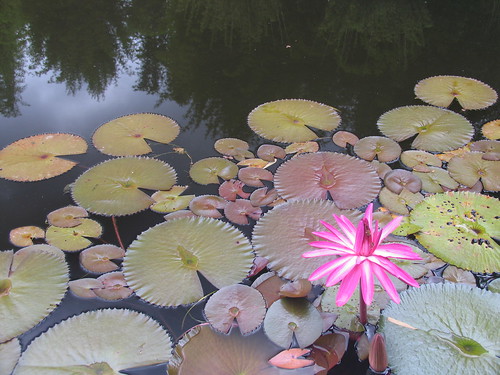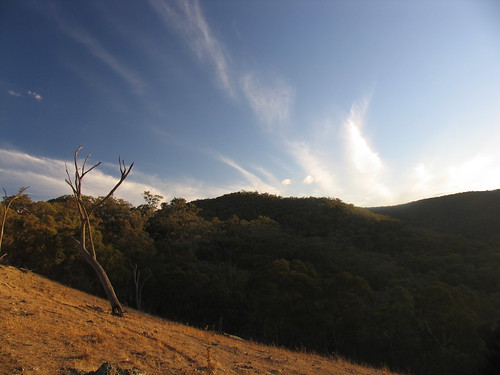The Loquat tree next door at Kirwin is a mighty beast – and it is much beloved by many of the birds hereabouts. Its got dense green foilage year round, doesn't give a toss about frost, becomes a humming tree in winter as the bees go crazy with all of its blooms, and then has masses of fruit before Christmas. If only I could strike it from cuttings… but apparently it grows well from seed – yay. It is definitely a power tree and i want as many as i can possibly have all over Milkwood.
While poking about in my nursery, which sits underneath this great specimen, today I discovered a new little friend on the ground. He'd fallen out of his nest which is way, way up at the very top of the tree (a sort of messy openwork arrangement of sticks), and from the look of his anxious mother, he is a red Wattlebird. Given that Cobba, the kelpie sheepdog, is also housed under the Loquat, i thought I'd make the little cheeper a temporary nest to prevent him from becoming Cobba's supper.
So now he is happily housed in a shoebox on a branch, and his mum comes and feeds him regularly, along with his sibling who is still way up in the tree, wobbling precariously on a branch. I take it both babies are out of the nest and stretching their new legs, although both can't actually fly yet, it seems, and the little cheeper got a bit ahead of himself and ended up on the ground. I don't think they're far from flapping about though – maybe a couple of weeks?
On the other side of the same tree, the willie wagtails (just about my favourite bird) are setting up home in the cutest little nest. Lots of calling and fussing, but not much actual sitting on the nest as yet. I check it every day for signs of family action. Fingers crossed. All this makes for a quite communal feeling in my nursery, in which the fig cuttings are actually GROWING! I feel like a right professional.
Details

 Being on the bottom half of this great big beautiful blue ball summer has slipped away and autumn is upon us. The evenings are getting chilly already.
Being on the bottom half of this great big beautiful blue ball summer has slipped away and autumn is upon us. The evenings are getting chilly already.







